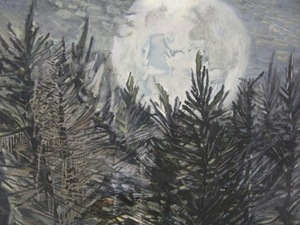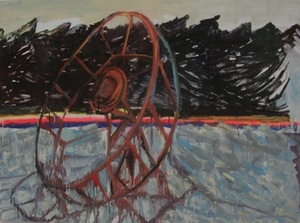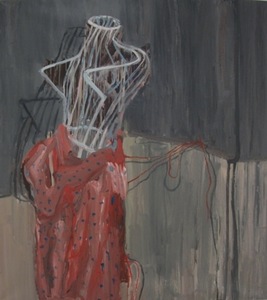CONSTANT VIEWS? CONVERSATION WITH PAINTER A. BARZDUKAITĖ–VAITKŪNIENĖ 2
In brief: The painting exhibition of the artist Aušra Barzdukaitė-Vaitkūnienė “Constant Views” was open at the exposition hall Titanikas of Vilnius Academy of Fine Arts in January. Fragments of green city spaces, views of picnics in yards, motifs of merry-go-rounds or resort bars intertwine into one story in the showcased painting cycle. By showing daily phenomena and festivals organised at home in her canvases, the artist tells about ways of entertainment that do not change, according to the painter.
In the interview the painter A. Barzdukaitė–Vaitkūnienė tells about these motifs and why they seemed interesting to her.
“The same routes create a deceptive security, in the same way as stability and constant views. Still, I am inclined to doubt the “constant view” as it is only a beautiful illusion that helps to calm down. The question arises what is there behind the constant view? Will we dare to look there? Trips are made not only by particular routes but also in internal labyrinths,” the artist speaks.
According to her, the title of the exhibition “Constant Views” could be written with a question mark. It may be questioned. “The history of humanity is full of festive rituals and entertainment (from sacred rituals to vulgar and even bestial merriments), only their forms change. My attention is directed at habits of people, certain routine and stability of the consciousness, and the seen/painted views are their expression,” A. Barzdukaitė–Vaitkūnienė explains.
When asked about irony and nostalgia in her paintings, the artist answers that she does not feel any special nostalgia. According to her, there is some irony and more of resignation and sensibility about the fact that we all have to “live out” our lives.
As for symbols used in paintings, the artist explains that the hare is the symbol of moon in mythology, it is also the symbol of life that passes by quickly, and moon symbolises change and uncertainty. Marulė is the diminutive name of death. “The painting with the dress is the skeleton, passage of time where the dress is only a temporary coat,” the artist reveals.
The artist who pictures the unchanging ways of entertainment of common people in her canvases states that her attitude is not didactic, it is rather critical or ironical. Merry-go-round in her works represents the intoxication of mind and consciousness with the felt reality.
According to A. Barzdukaitė–Vaitkūnienė, these particular motifs are interesting to her as, being constant, they have to be stable but they create the feeling of changing, turning and vertiginous reality at the same time, they take out the viewer from his/her usual reality.











